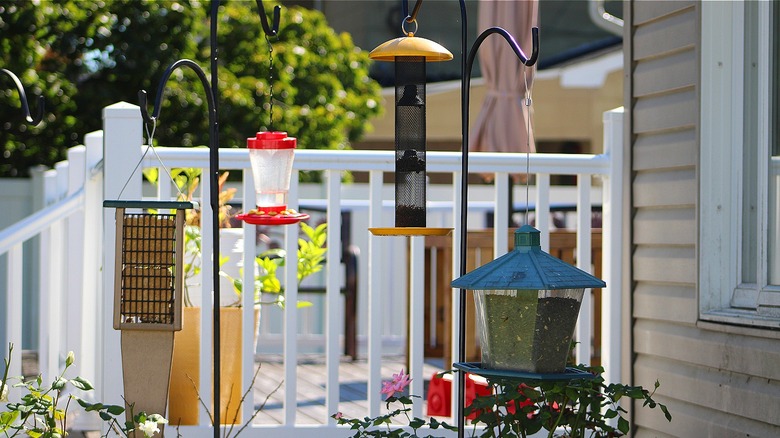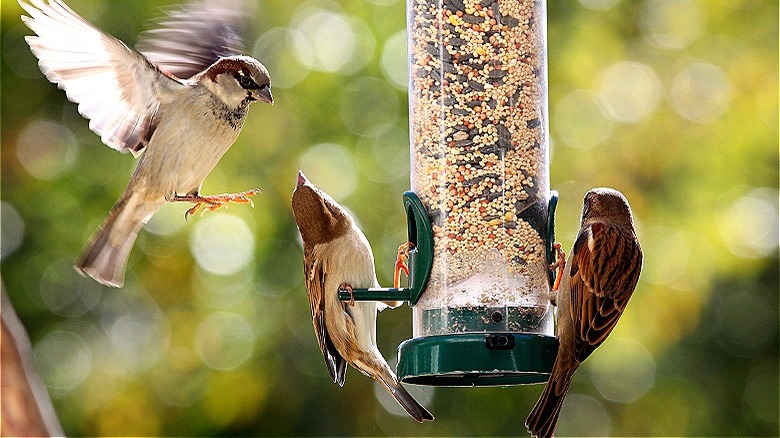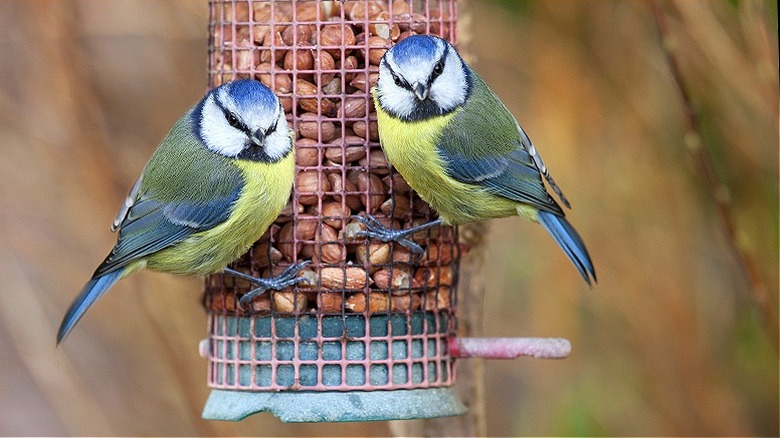This Specific Bird Feeder Attracts Smaller Birds While Keeping Away The Bigger Ones
Smaller birds can be enjoyable to watch, but feeding them may be difficult when bigger birds, many of which are more aggressive, push them away from bird feeders. However, the right bird feeder will attract finches, wrens, and other smaller birds while also keeping bigger ones away. If this is your aim, then a tube bird feeder is your best option, versus larger boxed, rectangular, or house-style designs.
Tube bird feeders are long and narrow, with smaller perches resting near openings. The benefit is that these smaller perches are difficult, if not impossible, for larger birds to use. The result is that the larger birds lack access to the feeder and food, giving the smaller birds the ability to access the food you want to feed them.
This method doesn't eliminate the bigger birds from your yard entirely, but it can reduce the number of them present significantly — allowing you to get a better view of the smaller birds as they flock to the now-accessible feeder. To encourage those smaller birds to remain present, be sure to use food that's easy to access from the ports along the sides of this type of bird feeder.
How to choose a tube bird feeder for your yard
A tube bird feeder is the best option to feed smaller birds in your yard, while keeping away bigger birds, because of its design: a long, narrow tube with small perches or ports. When choosing this type of feeder, there are a few things to look for in the best of them. Start with one that has smaller openings that keep bird seed inside; often ones with a bladder-like design that requires the bird to stick its beak within to pull food out. To minimize the amount of time spent refilling it, choose a larger, longer feeder and place it higher in your yard's tree.
Also, when choosing a tube bird feeder, be sure to consider the length and number of openings. Smaller birds tend to stick together in groups, so more than one opening is beneficial. You also want to look at the perch. It only needs to be a few inches for smaller birds to be encouraged to use it, but anything bigger than that, and bigger birds, like doves, blue jays, and grackles, are likely to benefit from it as well.
On that same note, avoid a tube feeder that's designed with a sizeable base or perch at the bottom and a wire or mesh-like design. The larger perch, like those that wrap around the entire base of the feeder, is big enough for larger birds to sit on it, negating the benefits.
Attracting smaller birds to your yard
Once you have the right bird feeder, you'll want to choose the right food to attract smaller birds to your yard. Foods with smaller pieces, like those with millet and sunflower seeds, work best. A good seed blend should include smaller portions of nuts and fruits that can easily pass through the openings of a tube bird feeder. Avoid products that are blended with mostly corn, wheat, or oats in them, as that's not desirable to many birds.
These narrow tube-style feeders do a good job of making it harder for bigger birds, including bully birds, to eat directly from them, but that doesn't mean they won't lurk around. Rather than eat from the feeder, these birds may spend more time on the ground nearby, picking up scraps that fall. Still, other large birds prey on smaller birds, which means that the feeder could attract them to your yard, too, as they monitor for an opportunity to access their prey.
There are a few additional tips to keeping these larger birds away, though, such as using shiny objects that are reflective in the yard. You can also place other bird feeders around your yard in other areas to allow for a bit of separation. While smaller birds are likely to visit those feeders initially as well, over time, they will go where their source of food is easier to obtain — i.e., the tube bird feeder(s). Consider offering several types of food at other feeders, too, like peanuts and suet, to attract different birds to the area.


